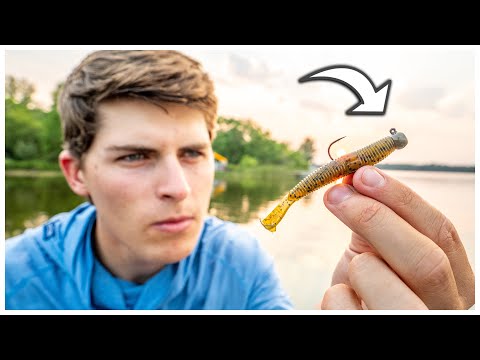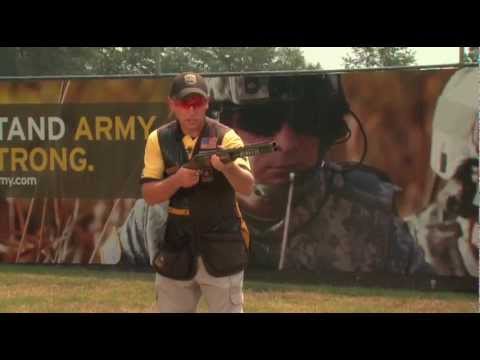101 Best Deer Hunting Tips For the Rut
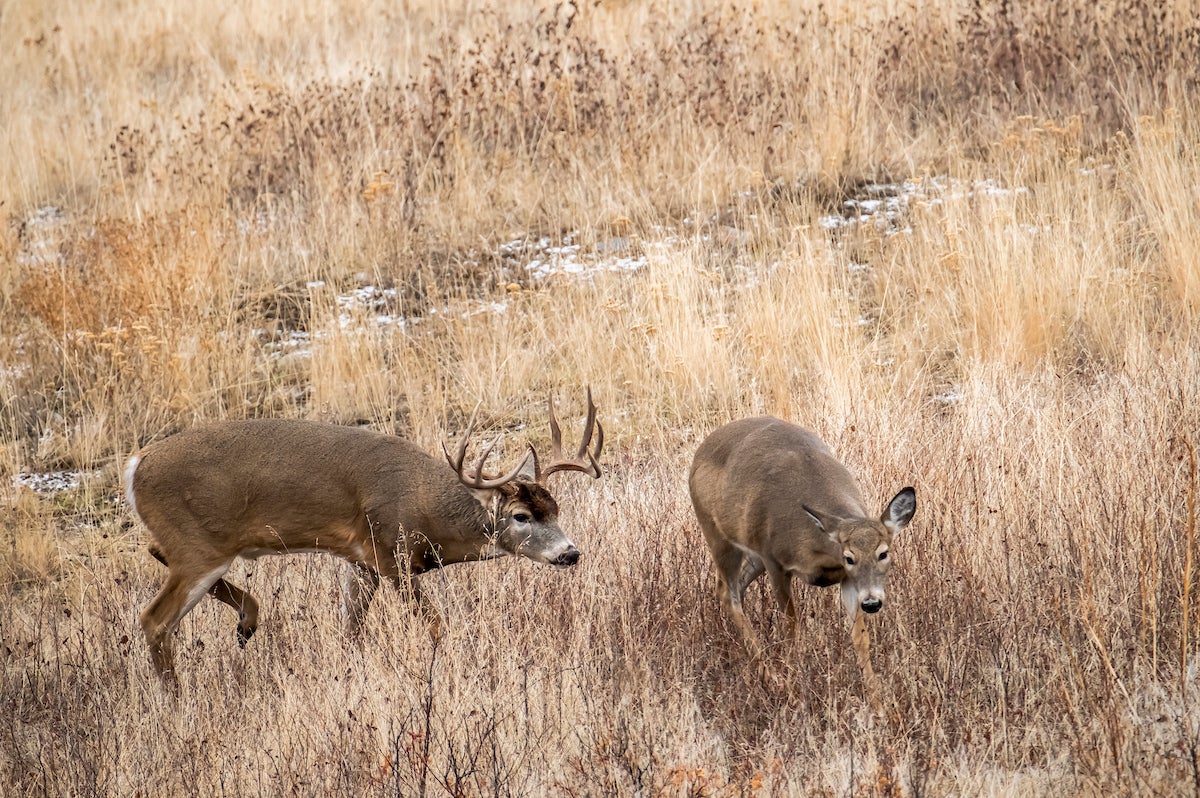
It’s the biggest lesson I’ve learned in more than 30 years of studying and hunting whitetail deer across North America: Don’t overthink it. You don’t need a grand plan to kill a buck, especially when the rut is on in November. Just go out and have fun, hunt every hour that you can, and use these time-proven pointers to your advantage. I’ve hunted the whitetail rut for decades all around the country for my show (BigDeerTV) and for various articles and writing assignments. Below are the best hunting tips I’ve learned and developed through the years.
Best Tips for Hunting the Rut
1) Check the record books, and you’ll see that more giant bucks have been shot November 7 to 12 than any other days. Make sure plan some all-day sits during this window.
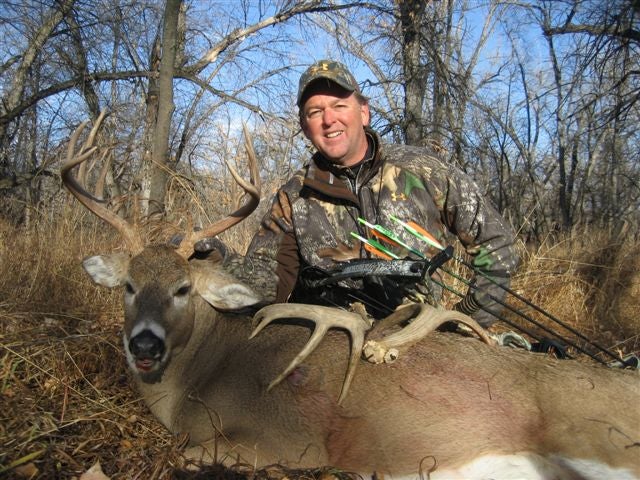
4) A bunch of antler-mangled saplings or cedar branches are sign of an aggressive buck— the kind of beast you want to hunt because he’s apt to move in daylight.
5) “In many areas, the first scrapes pop up in old logging roads, slip along and scout those first.” – Jim Crumley, Virginia bowhunter and creator of Trebark camouflage.
7) “Big trees with scarring from years of rubbing are signposts. Our observations suggest older bucks deposit pheromones on these rubs, and that plays an important role in the dominance ladder of a herd. All deer, does and bucks, interact with signposts—they smell and rub them—but only mature bucks make them. They act as communal scent wicks and are located in areas with high deer traffic.” –Dr. Grant Woods, Missouri biologist and hunter
8) November 10 a few years ago, Illinois: The wind was blowing 20 miles per hour. “I wasn’t going out,” says bowhunter Gary Sulcer, “but I did.” He’d been in the woods only minutes when a doe tipped by with a bruiser on her heels. Gary’s arrow was true; the main-frame, 8-pointer scored 160. Lesson: You only have so many days to hunt the rut, go when you can, no matter the conditions.
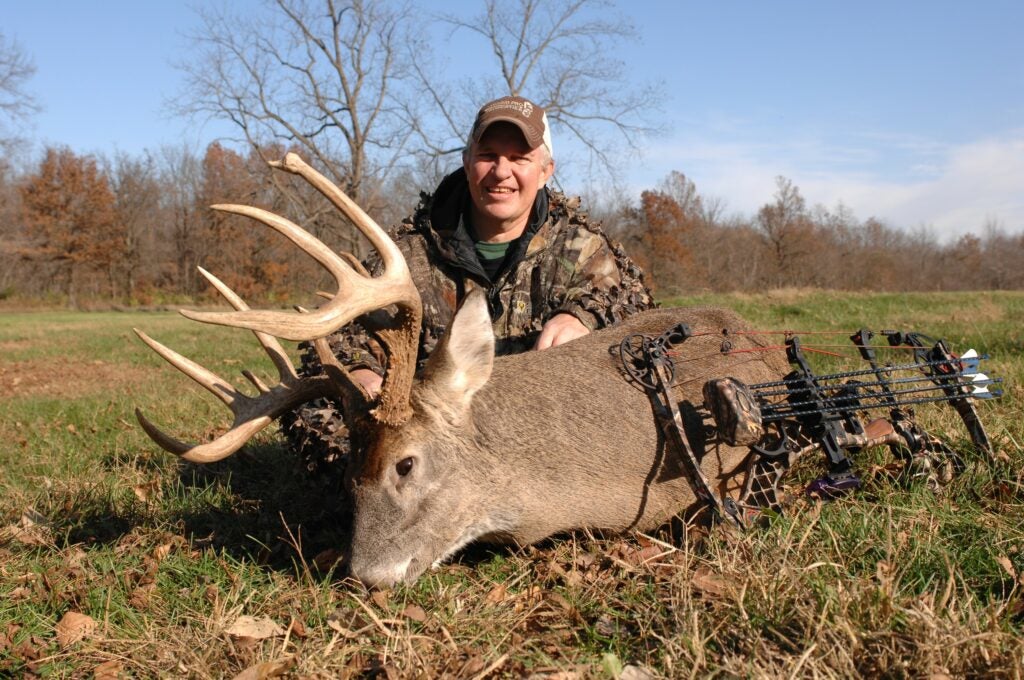
9) “We didn’t have any trail camera photos of that buck, and I had never seen him,” says Gary Sulcer. “But I knew there was a big one in the area, he was rubbing trees as big around as your thigh.”
19) Killer bow setup: Tree stand on an edge where pines or cedars meet hardwoods. Bucks rub, scrape, and prowl for does on these break lines.
21) Best scrapes to watch: In brushy cover with doe trails nearby.
22) Watch active scrapes 50 to 75 yards from dense bedding cover. You might catch a mature buck milling around scrapes closest to his sanctuary at first or last light.
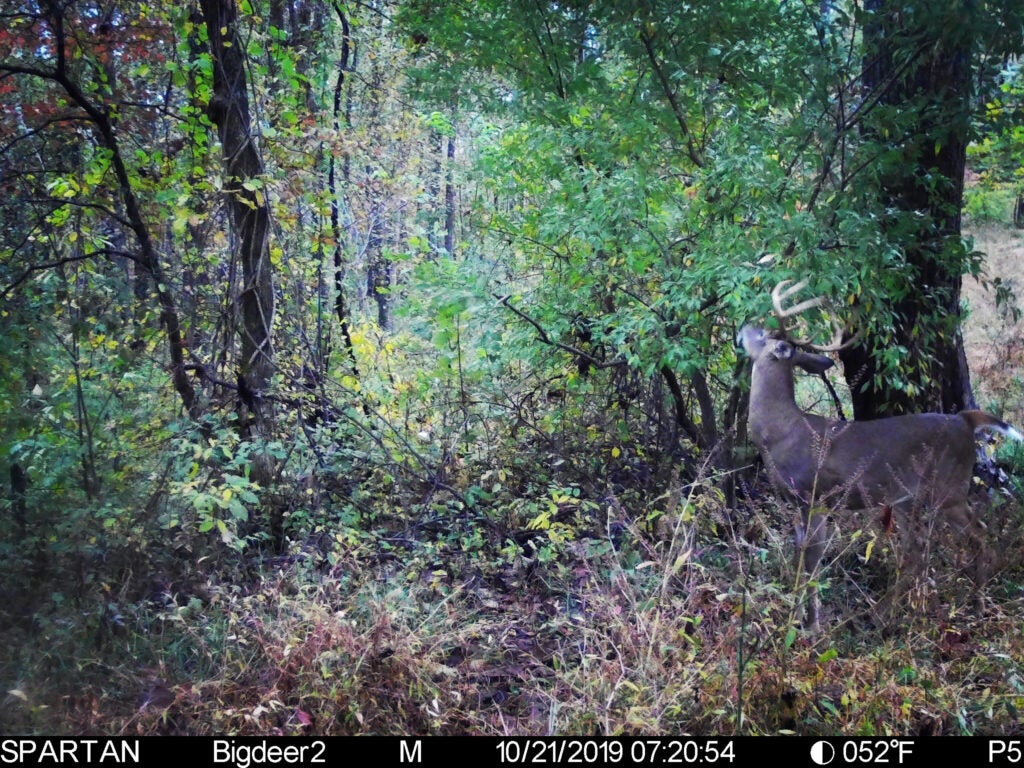
23) In hill country, look for scrapes dug 70 yards or so below a brushy hilltop. Bucks like to bed on a ridge or bench, watching for does and scent-checking scrapes below.
25) University of Georgia research: Multiple bucks hit one set of scrapes while other scrapes 100 yards away go dormant. Scout, move to, and hunt the hottest sign.
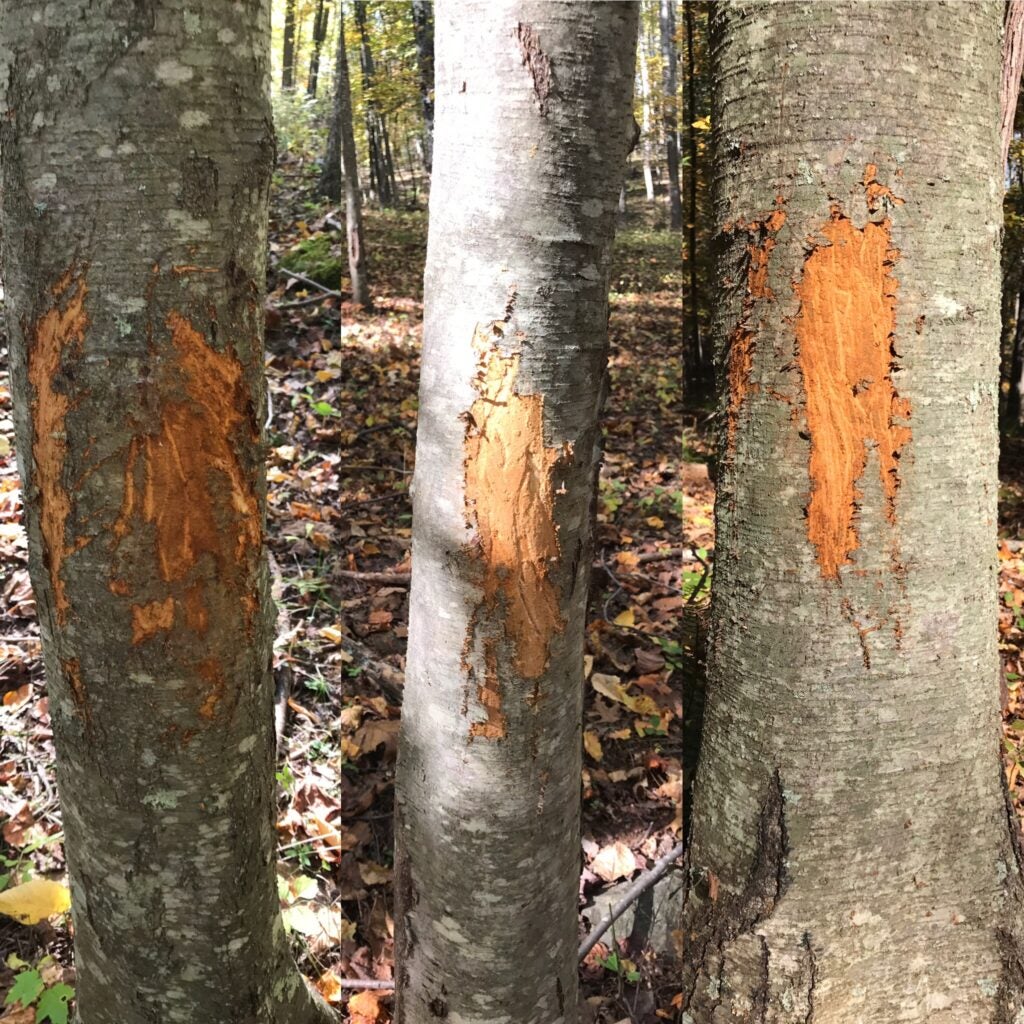
26) Set up too close to scrapes, and deer will see, smell, or sense your presence. Back off 100 yards or so, even when bowhunting, and watch for a buck circling into scrapes.
27) Wear rubber gloves and clip a mangled licking branch (which holds the forehead and saliva scent of several bucks and does) from atop an active scrape and wire it over a mock scrape near your stand.
Read Next: Best Deer Hunting Gear
28) Best rut stand #2: Downwind of the “X” where two trampled doe trails cross.
29) “Set tree stands between 17 and 20 feet. When a buck comes by at 20 to 30 yards, you’ll see plenty of lungs, the perfect shooting angle.” – Terry Drury, Midwest bowhunter and outdoor TV personality.
31) Best rut stand #3: Thirty yards back in the woods off the corner of a field, along a main trail. Does will come from several directions, converge in the corner, and make their way back into the timber. Bucks prowl a corner where they can see and scent-check many does.
32) In Indiana one November, bowhunter Brent Ireland got a single cam picture of a double-drop giant. He hung a stand on the ridge near his camera and killed the 199-inch buck two days later. Lesson: Get one image of a monster on his feet in daylight, move in, and hunt him.
33) Set trail cameras on different sets of scrapes, and you’ll get images of most of the bucks on your land, both the locals and the passers-through.
36) A doe that flits around with her tail erect is ready to breed or almost ready. A buck or bucks will be close.
37) Best rut stand #4: Hogback ridge flanked by crops and CRP, swamp or similar thick cover on the other side.
38) One humid Texas morning, we rattled up 15 bucks. Guide Clay told me, “With moisture thick in the air, horns have a high-pitched tinkling, bucks like that.”
39) Science out of Texas: Halloween to November 8 and Thanksgiving to December 8 are the best times to rattle up mature bucks.
40) Rattling bags and boxes work, but nothing beats the real thing. A solid set of 140-inch antlers are the bomb, with just the right tone and volume.
41) After rattling at a buck a good ways off, don’t let your guard down, even if he shows little interest. Sometimes a buck will walk 50 more yards, get curious and circle back to check you out.
42) Best time to rattle: Sunrise to 10 a.m. I don’t carry horns in the afternoon.
43)Hold one rattling antler tight to your body and bang and grind on it with the other antler to cut down on hand movement.
44) “If your arms and hands aren’t tired after a rattling sequence, you’re not doing it hard enough.”—Texas rattling expert Gary Roberson
45) Screw a rubber-coated hook ($2 at Home Depot) into a tree close to your stand. Hang rattling horns within easy reach.
46) A shooter trots by 100 yards out—try a quick burst of rattling to stop him.
47) Research from Texas shows ground rattlers don’t see half the bucks that come in. Elevate and rattle from high ground, or a tree stand or tripod, to spot more bucks.
48) Best-sounding grunt call for my money: Ridge Runner from Quaker Boy.
Read Next: Best Deer Calls
49) When a buck hears your rattles or grunts and is interested, he begins to hunt you. Set up with thick cover to your sides and behind you. Make a buck commit close as he searches for the “deer” he hears.
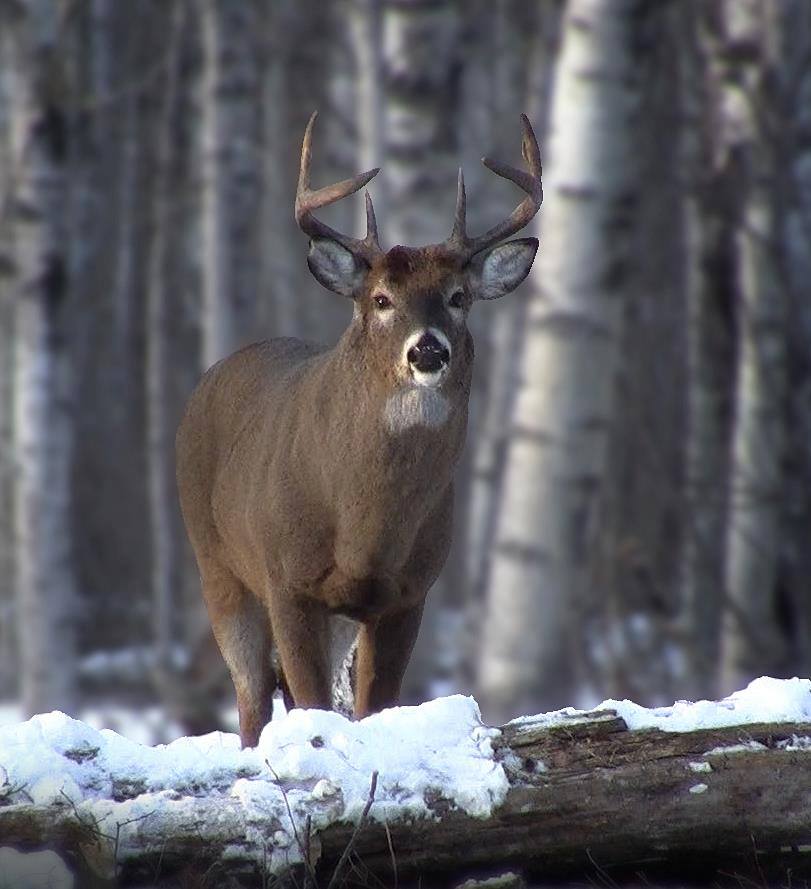
50) A stud chasing or tending a doe makes loud, weird sounds. Blow urrrp, urrrp or urrrg, urrrg on your grunter to mimic it.
51) Blowing a sequence of 10 to 12 grunts on your call is most realistic.
54) When a buck rolls in out of nowhere, don’t reach for your call. Bleat or grunt loudly with your voice—baaahhh or eckkkkk—he’ll stop.
55) Remember to draw your bow or aim your muzzleloader before you grunt or bleat to stop a buck. Obvious, but it’s easy to forget when a big-racked bruiser is close!
56) “The grunt-snort-wheeze is the most aggressive rut call. It can bring in a dominant deer, but it can also scare off young bucks.”—Georgia biologist Dr. Karl Miller
57) Good rattling/grunting setup: Wind in your face and rock bluff or stream at your back. A buck can’t circle downwind and bust you.
58) A deer’s eyes are oriented to pick up predator movement on or just below the horizon. You can get away with a bit more movement in a tree stand, but still, be careful.
59) Favorite muzzleloader setup: Sitting on a hillside, looking across to an adjacent hillside where I can cover 2 or 3 thickets. Bucks move all day from one cover to the next checking for does.
60) Best rut stand #5: A creek or shallow river crossing pocked with fresh tracks in brushy woods. The waterway dictates and funnels most all deer movement through the area.
61) Deep, splayed tracks 2-½- to 3-½-inches long in the mud were likely made by a buck, though the size of his rack is anybody’s guess.
62) Position a stand or blind so the sun rises or sets behind you. You’ll have an extra 10 minutes of shooting light at dawn and dusk. To hide better overall, understand deer vision and what colors deer can see.
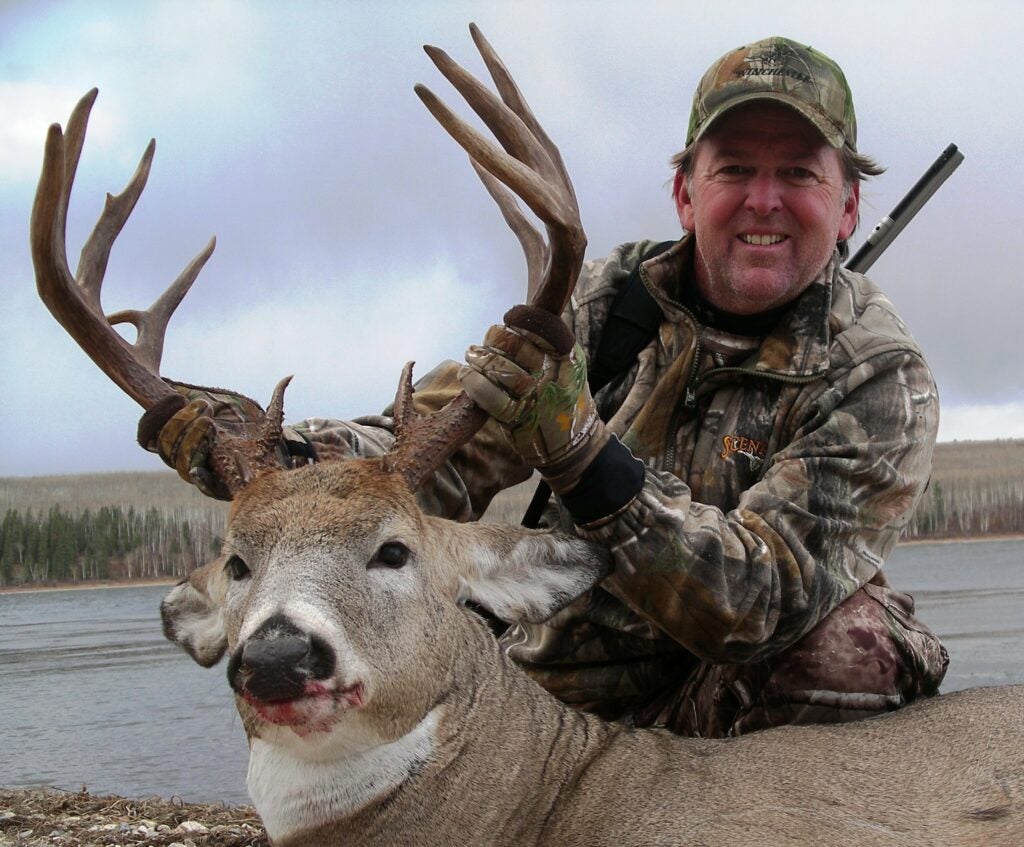
63) “On land that has been managed for years, 5- and 6-year-old bucks can’t compete with the aggressive 3- and 4-year-olds anymore, or don’t want to. Some old giants travel across the fences and take up residence where there’s less competition for does. If that happens to be where you hunt, great.” –Iowa bowhunter Don Kisky
64) Best tip for hunting public land: Hang a tree stand in thick, secluded cover and sit in it all day. You might catch a buck rutting a doe on natural movement, or another hunter might inadvertently drive a 10-pointer to you. Either way, you win.
65) Multi-year data from a property in South Carolina showed that 95 percent of the 30-½-year-old and older bucks harvested were killed within 100 yards of a well-defined sanctuary, such as a pine stand, brushy clear-cut, or cedar thicket.
66) Around November 10, break out the hot-doe scent like Tink’s #69.
67) Reach up and hang scent wicks 6 feet or higher so the wind and thermals swirl and carry the scent.
68) Texas study: Bucks split time equally at scrapes juiced with doe or buck urine. Might as well dump both into a real or mock scrape you’re watching.
69) “The weekend of November 8 to 10 should be excellent this year, especially if it’s cool. I think your best shot to see a mature buck is 1 p.m. to 5 p.m. Hunt your best food source.” –Mark Drury, Iowa expert and TV personality
70) Douse a doe decoy with estrus scent and set her in a clearing where a buck can see her and approach comfortably from downwind.
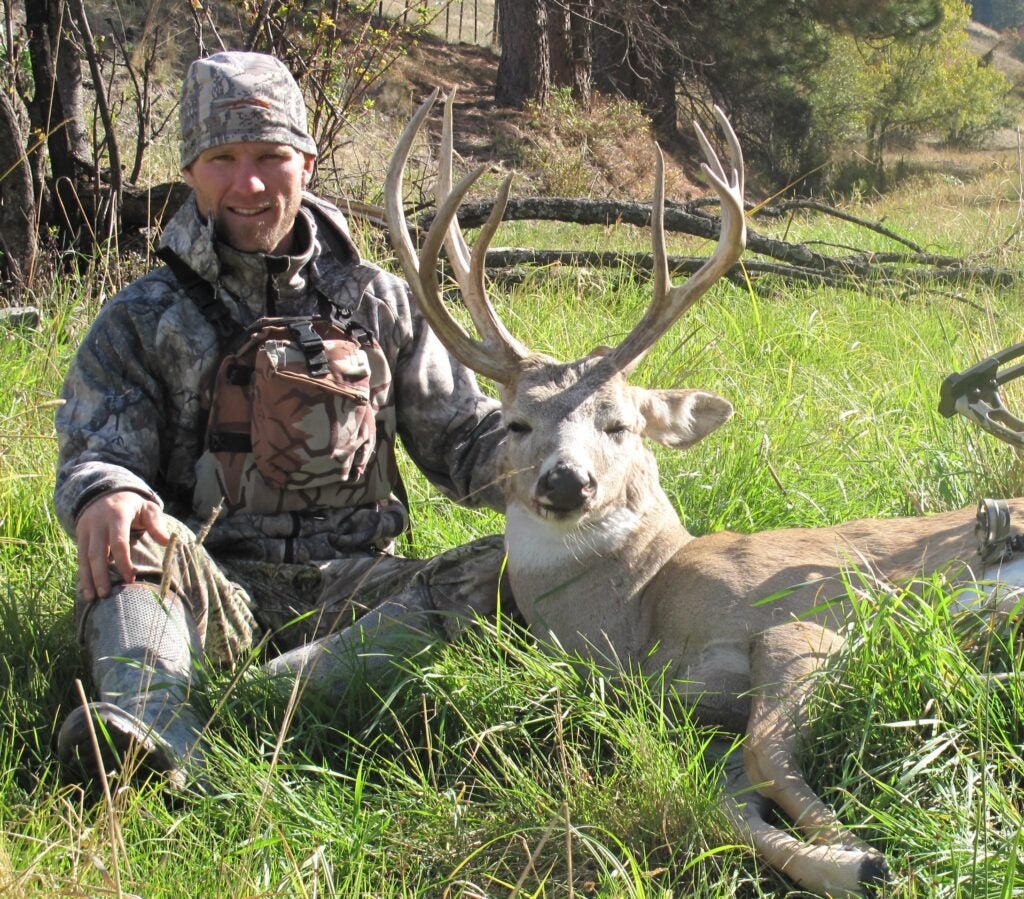
71) In an abundance of caution to prevent the spread of Chronic Wasting Disease, 9 states prohibit the use of natural deer urine and permit only synthetic scents. Check your regulations. Don’t worry, synthetics smell like deer and work fine.
72) Cut tarsal glands off a doe or buck your buddy shot, and hang them near your stand both as an attractant and cover scent. Black hocks from a buck that has rutted for weeks reek the best.
73) Did you know? You can store deer hocks in a Baggie in the freezer and use them again next November.
80) Watch a doe trail trodden to dirt or mud long enough, and a good buck will prowl by.
81) Full moon week November 12: Expect bucks to move 11 a.m. to 2 p.m. Hunt all day if you can hack it.
82) If 10 hours on stand are too much, sleep in, sneak to your spot at 9 a.m., and hunt out the rest of the day. A North Carolina State study found that during a full moon, deer don’t move much in the morning, but the midday hours and early afternoon are good.
83) Good post for a mid- to late-November afternoon: 70 to 100 yards back in timber and along the thickest, nastiest ditch that leads out to crops.
84) Don’t waste precious rut-hunting time. If you sit in a spot for three days but don’t see much, move.
85) Dilemma: Pass or shoot the first buck that chases a doe past your stand because a bigger buck might be coming? Advice: If you’re happy with the first rack, take him.
86) Studies of GPS-collared deer from Maryland to Texas show that most all bucks make “doe excursions” out of their core area during peak rut. Some bucks might wander 5 to 8 miles or more, while others move 2 miles or less.
87) Oklahoma study: When bucks embark on doe excursions, they move in linear patterns. By traveling for miles in straight lines, they maximize their chances of contacting hot does. Set several stands along a linear creek bottom or ridge to intercept a buck.
88) When gun season opens, monitor where people park their trucks and enter the woods. Hunt a secluded spot that others overlook. It might be 2 miles deep in the woods, or 200 yards off a back road.
89) You’re still-hunting and a doe jumps out of a ditch. Find the nearest rest and ready your rifle, a buck is apt to roll up out of there next.
90)Wyoming, November 18 a couple of years ago: It was 70 degrees and windy, and bucks rutted all day. I shot a 150-incher dogging a doe at 3 p.m. Lesson: Hunt hard, the pull of peak rut overrides the weather.
91) If you plan to hunt afternoons after work this season, do it November 19 to 24. North Carolina State researchers found that deer movement can be excellent the last hour of daylight during the last-quarter phase of the moon.
92) Post-rut hunting is better than you think! Research from Maryland shows that 20 to 40 percent of mature bucks continue to make doe excursions into December. Keep grinding until you get one.
94) One December in Kansas, my friend Jim Riley saw three bucks hassling a small doe. The next day he went back and saw 5 bucks dogging her, and he shot the biggest 8-point. Lesson: Find the last hot doe and stick with her.
95) Killer gun stand: Narrow weed strip between 2 blocks of woods. Bucks run the “point-to-point” for does.
96) First week of December, lay a doe-in-heat trail into your stand. It can actually work better now to bring in a buck because there are fewer receptive does misting the woods.
97) Studies of hunter behavior consistently show that most people hunt only a half-mile or so from a road, field or another easy area. For more elbow room and fun, hike deeper.
98) Aging a buck before peak rut: Check stomach girth; the older a buck gets, the bigger his belly gets. If his stomach sags lower than the bottom of his brisket, the buck is 4½ or older.
99) Aging a buck after peak rut: Forget girth because a buck can lose 25 percent of his body weight chasing and breeding does. Glass a buck’s tarsal glands. As a buck matures, his hocks appear bigger and blacker.
100) A ditch on a ridge; a fence corner 20 yards back in the woods off a bean field; a tiny creek bend or crossing… Little “inner terrains” funnel the movements of bucks as they prowl from one doe unit to the next. Hang a stand downwind of one.
101) Expert bowhunter Kevin Robinson kills big deer in the suburbs of Missoula, Montana, but never in October. “Not hunting early for 4 or 5 weeks is hard to do, but I know how good the hunting will be as the rut comes on,” Kevin says. In November, Kevin sets tree stands low in mountain draws, often fairly close to houses, roads, and developments. “Bucks that live up in the hills start moving down and looking for does, and it’s game on.”
The post 101 Best Deer Hunting Tips For the Rut appeared first on Outdoor Life.
Articles may contain affiliate links which enable us to share in the revenue of any purchases made.
Source: https://www.outdoorlife.com/best-deer-hunting-tips-for-the-rut/


